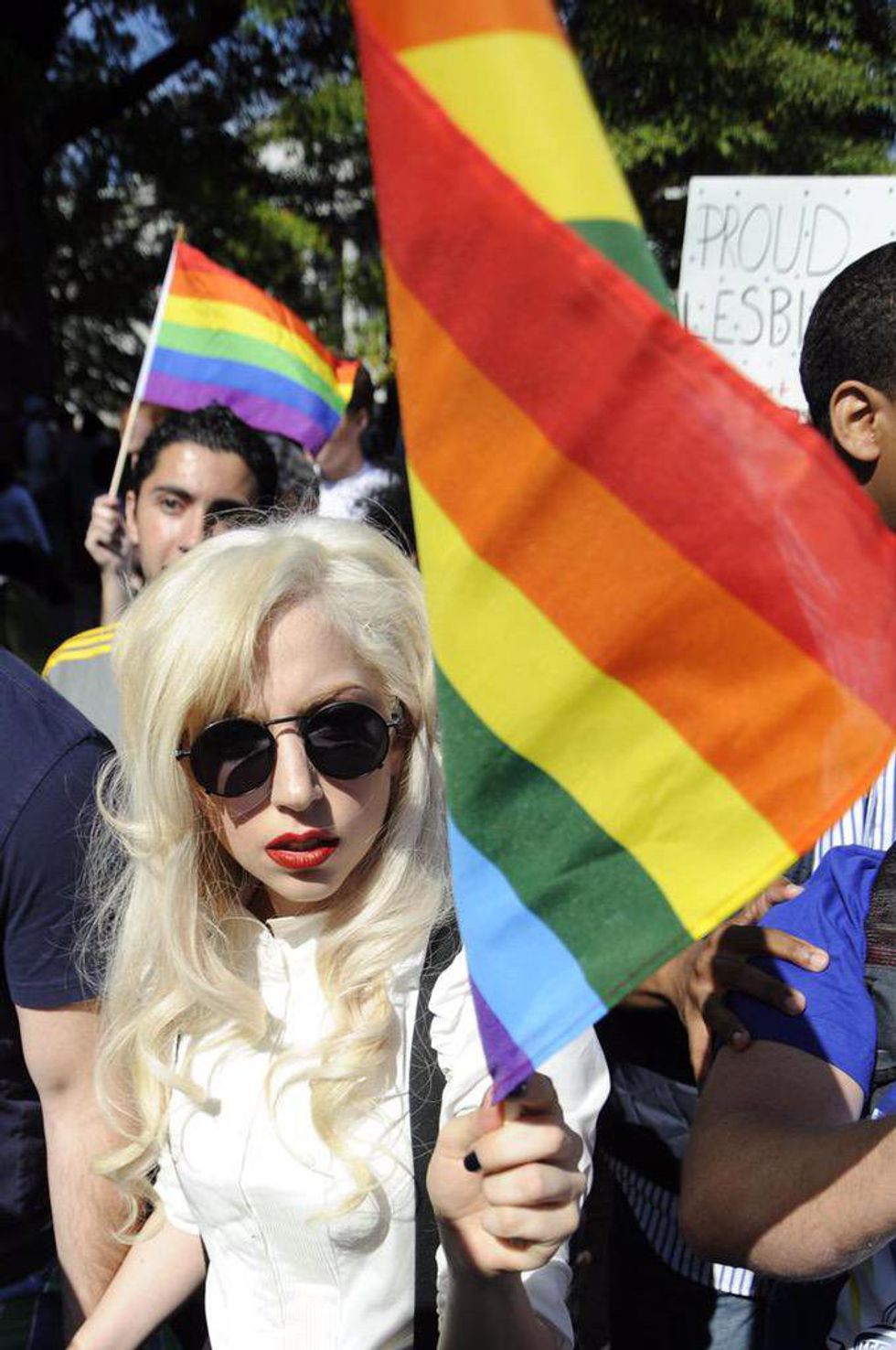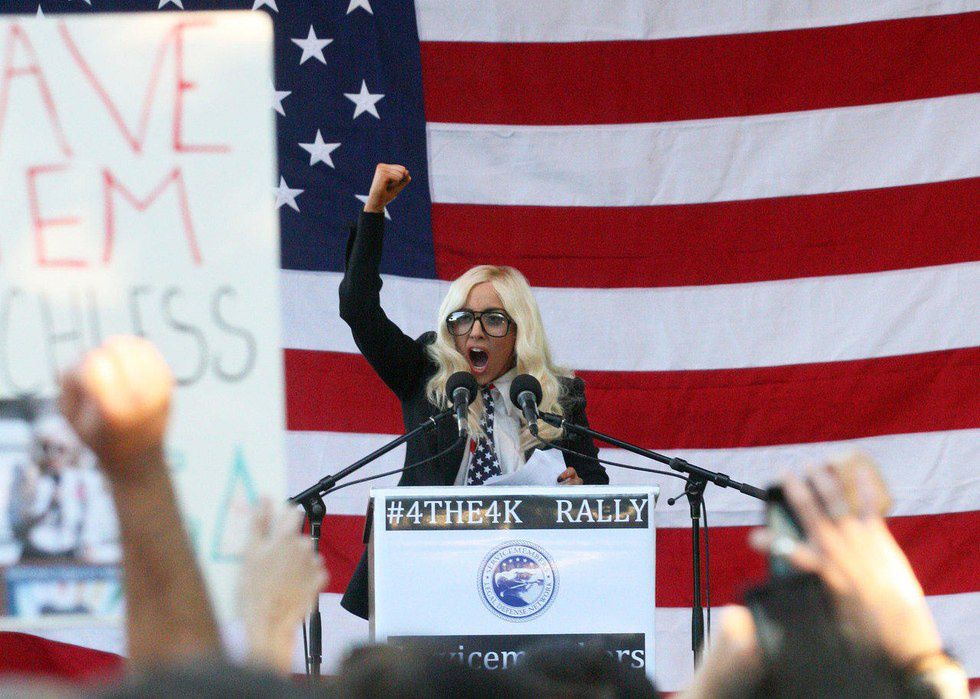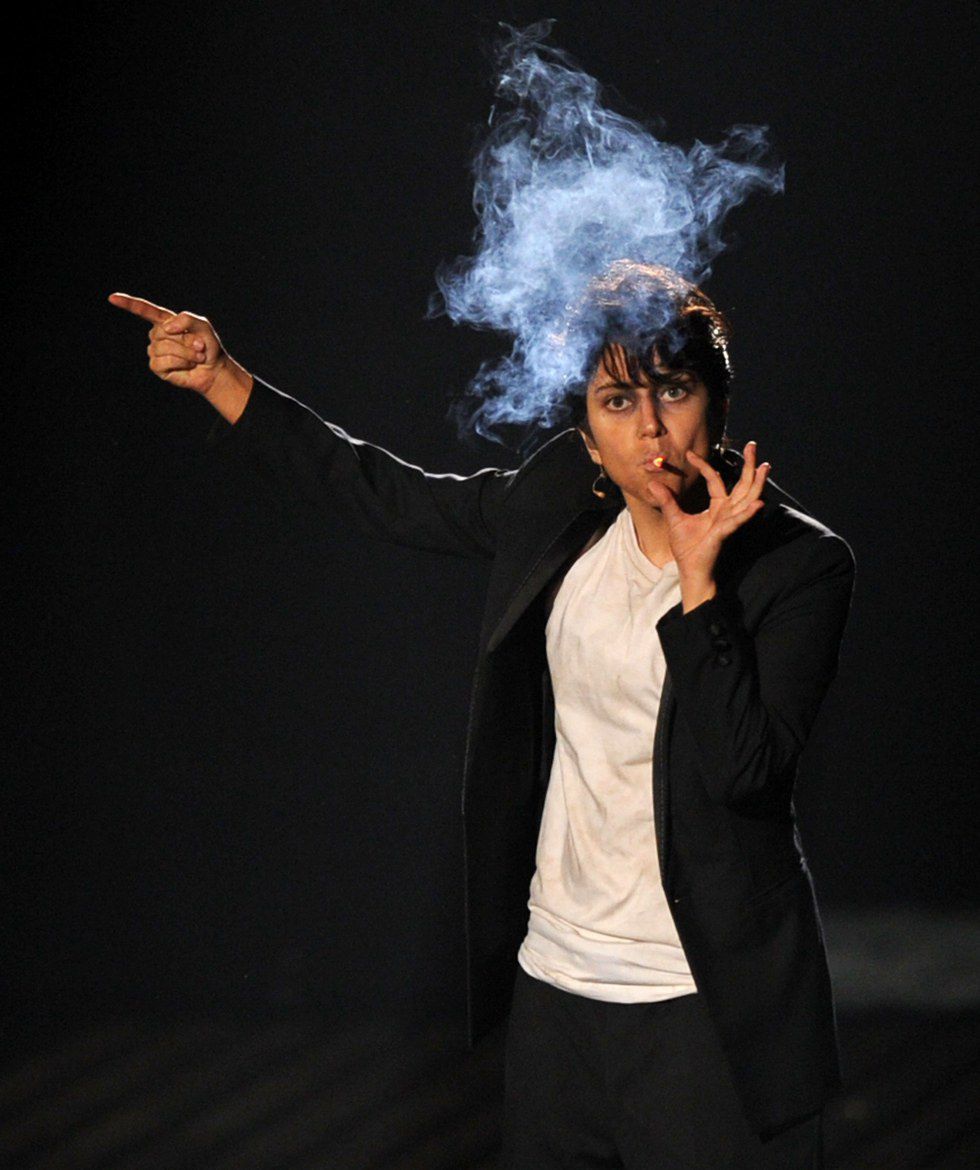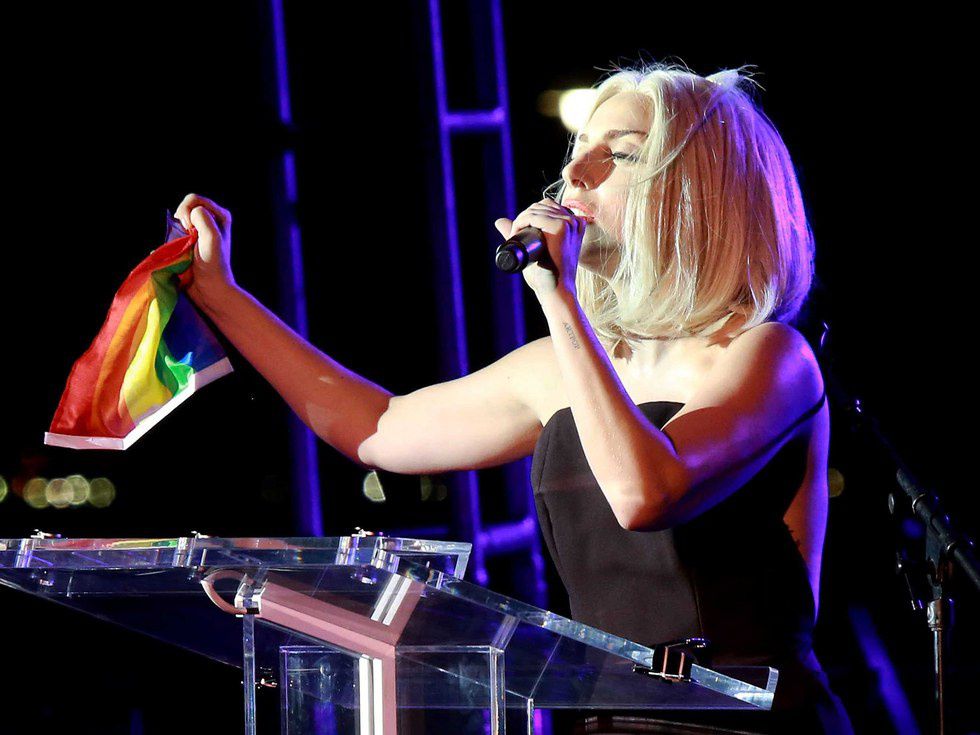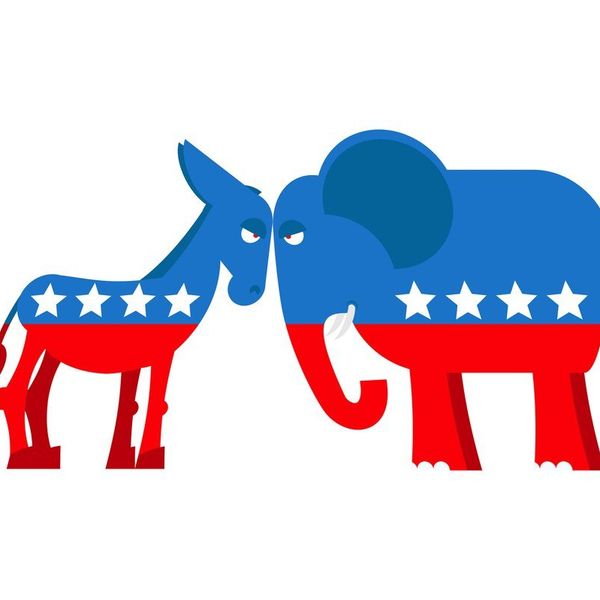As the 2010 MTV Video Music Awards were wrapping up, Cher presented the final award for Video of The Year on stage. “The Winner is… Lady Gaga,” she stated. No shock there, since Lady Gaga managed to sweep six other awards earlier in the night for the “Bad Romance” video as well as the award for Best Collaboration for the “Telephone” video with Beyoncé. The shock came when the singer stood up and began to walk onto the stage to accept the prestigious award. At that moment, the true nature of her dress began to materialize in the minds of the viewers, begging the question, “Is that… meat?” There she was, standing on stage accepting the most coveted award of the night, in a dress made entirely of raw meat – paired with matching meat shoes, a meat fascinator, and a bejeweled meat purse (of course). The appearance instantly provoked a surge of reports on the jarring ensemble – some positive, some negative, and some just flat out confused.
Today, the meat dress plays a pertinent role in fashion and music history and has since become one of the most buzzed-about moments of Lady Gaga’s career. The meat dress is one of the most controversial fashion looks to date and 2010 was dubbed “the year of the meat dress” by Harper’s Bazaar. Still, the question that remained was, “Why?” The answer may be surprising; as most Gaga-related things are.
Recommended for you
Lady Gaga, an artist synonymous with over-the-top fashion and controversy, is a jack of all trades when it comes to entertainment. With numerous credits as an actress, songwriter, director, producer, philanthropist, model, and magazine-editor, she has established herself as one of the key figures of our time, with an estimated $280 million dollar net worth in 2015. But there is one title immersed in the ever-growing resume of Lady Gaga that goes beyond fame and fashion: activist. A significant amount of Lady Gaga’s fans, dubbed “Little Monsters,” identify as being members of the the LGBT community and their support has designated her as one of the “12 Greatest Female Gay Icons of All Time,” among the likes of Madonna, Bette Midler, and Cher. Even with a plethora of love from the LGBT community, some may be surprised to know that many of her most shocking and infamous moments have been a form of activism for a wide array of issues affecting the LGBT community, the meat dress being no exception. While activism is often associated with pickets and rallies, some activists use attention-grabbing actions to highlight an issue —I call this “shock-value activism.” This idea of “shock-value activism” is certainly not a new concept, as groups like the People for the Ethical Treatment of Animals (PETA) and The Truth use shocking images, commercials, and advertisements to advocate for their cause. Lady Gaga is one of the leading “shock-value activists” in the entertainment industry and has utilized shock value tactics on numerous occasions to bring awareness to important issues, particularly those affecting the LGBT community, like inequality and “Don’t Ask, Don’t Tell.”
The infamous meat dress of 2010, the moment that is still brought up when talking about Lady Gaga today, was in fact a bold statement about the controversial “Don’t Ask, Don’t Tell” policy that was signed into law in 1993. The law prohibited gay and lesbian soldiers from serving openly in the military and allowed for the legal discharge of those soldiers solely based on their sexuality. With Barack Obama promising to overturn the law while campaigning for President of the United States in 2008, many activist groups in the LGBT community were optimistic about the potential for significant progress to be made during his administration. Many groups, such as Human Rights Campaign (HRC) and the Servicemember’s Legal Defense Network (SLDN), a network of LGBT soldiers affected by “Don’t Ask, Don’t Tell,” took action to make the repeal a reality. SLDN led the fight to overturn the law in 2010 which included meeting with Lady Gaga to discuss the need for action.
Lady Gaga supported SLDN’s work on two occasions in the fall of 2010 to call for an end to the discriminatory law. The first occasion was in fact marked by the meat dress. When appearing on an episode of 60 Minutes with Anderson Cooper, Lady Gaga described the message behind the notorious outfit, explaining, “What I was really trying to say was dead meat is dead meat. And anyone that’s willing to take their life and die for their country is the same. You’re not gay and dead, straight and dead. You are dead.” While the dress alone obviously did not influence the government to repeal the law, it did raise public awareness of the legislation drastically. A law that few had even mentioned since its enactment in 1993 was suddenly at the forefront of every article and news story reporting on the meat dress.
The second occasion of Lady Gaga’s work with SLDN took place at a rally in Portland, Maine on September 21, 2010, roughly a week after the Meat Dress mayhem. The rally was organized by SLDN and featured a speech, written and delivered by Lady Gaga, entitled, “The Prime Rib of America.” By this point her outlandish outfits had become an expectation, but the artist yet again managed to shock the public, albeit in a different way.
Arriving to the podium in an understated black suit, white dress shirt, and simple blonde hair, Lady Gaga surprised many by her serious and understated appearance. She began her speech by taking the oath that all soldiers take when entering the Army; however, after doing so, she bluntly added, “Unless, there’s a gay soldier in my unit, sir.” Spectators were taken aback by the bold and direct calling-out of the homophobic mentalities that some soldiers in the military possessed. Lady Gaga went on further to proclaim that LGBT soldiers should be given the same rights as straight soldiers, stating, “I should have the ability, the opportunity, the right to enjoy the same rights — the same piece of meat — that my fellow soldiers, fellow straight soldiers, already have included in their Meal of Rights. It’s prime rib, it’s the same size, it’s the same grade, the same cost, at wholesale cost, and it’s in the Constitution.” The comparison of equal rights to prime rib is not only an attention-grabbing metaphor but it also utilized the lingering buzz of the meat dress. Videos and transcripts of the speech soon went viral, being reported by sources such as CNN, MTV, the New York Times, the Guardian, and the Huffington Post, to name a few. The virality of the speech managed to bring even more attention to the law and, unlike the meat dress, was a direct effort of activism.
Another example of Lady Gaga’s direct activism for the “Don’t Ask, Don’t Tell” issue was a video, uploaded to her YouTube page on September 17, 2010, in which she requested her fans call their local senators to ask them to vote for the repeal, even calling her local senators herself. The call to action was effective, reaching many senators and urging online activists to go beyond “clicktivism” and physically voice their opinion. While the first vote on the law was not a victory for the activists, a bill calling for the end of the law soon passed both houses of Congress and was signed by President Obama on December 22, 2010, finally overturning “Don’t Ask, Don’t Tell.” Lady Gaga was honored for her activist work by SLDN who awarded her the Randy Shilts Visibility Award at their 19th Annual Dinner, stating “Lady Gaga’s outspoken commitment to end “Don’t Ask” discrimination helped to renew the call for repeal on the national stage and emboldened millions of young people to get engaged, take action, and play a decisive role in repealing this bad law.”
After a short hiatus from the media, Lady Gaga returned to the spotlight with a performance at the 2011 Grammy Awards. With a lot of anticipation surrounding the appearance, no one quite knew what to expect from the singer but the result still managed to shock viewers. During the Red Carpet broadcast, reporters’ heads turned when a female model in a skin-tight, yellow latex dress led four half-naked men in matching yellow latex shorts who were carrying a large egg-shaped contraption, which encased Lady Gaga. While Lady Gaga was only slightly visible in the egg, the sheer, alien-like appearance of the model and men were enough to shock viewers. With prosthetics on their temples and cheekbones and eyebrow-less faces, the four men carrying the egg, along with the woman escorting them, were quickly the victims of relentless flashes from the paparazzi and reporters. To the surprise of most viewers, Lady Gaga did not come out of the egg on the red carpet and was instead “birthed” on stage at the beginning of her performance of “Born This Way,” her latest single. The imagery of Lady Gaga emerging from the egg while singing the lyrics of this pro-equality anthem was soon contextualized as an effort to counteract the Christian Right’s belief that being gay is a choice. With lyrics like “No matter gay, straight, or bi – Lesbian, transgendered life – I’m on the right track baby, I was born to survive,” Lady Gaga clearly voiced her support for the LGBT community and included them by name in a pro-equality anthem that would hold the number one spot on the Billboard charts for six weeks.
One of the key tenets of equality is viewing everyone on a level playing field, and viewing sexual orientation as a birth-trait (rather than a choice) is one of the biggest battles in the fight for equality. This is an important distinction to be made because nearly all equal rights in American history have been “granted to groups based on race and sex because those are genetic, born characteristics.” Establishing sexuality as a born characteristic is therefore crucial to granting the LGBT community equal rights, like legalizing gay marriage, adoption by same-sex parents, and equal opportunity employment. The massive popularity of Lady Gaga’s “Born This Way” and the bold message behind it helped positively shift public opinion toward this realization that being gay is a birth-trait, in the same way that being straight is.
Roughly six months after the release of “Born This Way”, Lady Gaga was scheduled to open the MTV Video Music Awards on August 28, 2011. Before the awards ceremony even began, Lady Gaga shocked the press by not appearing on the highly-televised red carpet. This ignited rumbles of anticipation for the performance, which began with a single spotlight on a man with black greased-back hair, wearing a dirty black suit and a cigarette in hand, engulfed in smoke. The man began to walk towards the audience and uttered the words “My Name is Jo Calderone and I was an asshole” before delivering a four-minute monologue about his troubled relationship with Lady Gaga. While the man did strike a somewhat similar resemblance to Lady Gaga, it wasn’t until he began to sing “Yoü & I,” Lady Gaga’s latest single, that it became clear that it was in fact Lady Gaga behind the wig and suit. While she was certainly not the first performer to do female-to-male drag, she took it a step further than most and remained in character the entire night, even accepting that award for “Best Female Video” as Jo on behalf of Lady Gaga. The performance of Jo was much more than a fashion statement (as opposed to Katy Perry’s cheese-cube hat).
Gender issues are an increasingly pressing issue and while they are not exclusive to the LGBT community, they are commonly associated with it. Challenging gender stereotypes and gender expression via pop performances has been done before, most notably by Annie Lennox’s impersonation of Elvis Presley at the 1984 Grammy Awards. However, the performance of Jo Calderone was one of the most-televised and widely-reported attempts at changing gender expectations to date. When asked about the success of the performance, Murray Hill, one of the leading drag-kings in the female-to-male industry, replied, “There is barely any visibility for FTM, drag kings and lesbians on television. There is a huge imbalance. For Lady Gaga, the biggest pop star in the world, to go on TV with millions of people watching in drag as a man and then to actually say ‘lesbian and transgender’ live is undeniably powerful and creates change. She ups the visibility big time and gets the language into the mainstream.” Reporters’ reactions to Jo were extremely mixed: some found it amusing, some thought it too political, and some were at a loss for words. For an issue that relies mainly on the public’s perception, it was a bold move for Lady Gaga to force the conversation into the mainstream media and helped sparked the conversation of drag, transgender, and gender roles in a society where those topics were often swept under the rug.
Lady Gaga’s success as a musician, actress, and fashion icon is proven by her array of awards, records, and accolades, but her success as an activist is much more difficult to measure. With the repeal of “Don’t Ask, Don’t Tell” in 2010 and the legalization of gay marriage in 2015, it is easy to measure the success of the LGBT issues that Lady Gaga advocated for. While it is difficult to measure Lady Gaga’s personal impact in passing the legislation behind those victories for the LGBT community, the awards given to her by the SLDN and similar pro-LGBT groups highlight her significant role in increasing the visibility for the issues. With an array of activist efforts toward equality for the LGBT community like a moving speech at the National Equality March in 2009, a performance at the Human Rights Campaign Dinner, a heartbreaking speech for the victims of Orlando, and various Pride appearances, Lady Gaga has proven herself to be an outspoken activist of equality for the LGBT community and have earned her gay icon status. While some may prefer traditional sit-ins, pickets, and protests as commendable activism, “shock-value activists” like Lady Gaga should not be overlooked. Wearing a dress made out of raw meat is just as big of a statement as holding a sign at a protest, and any effort toward making this world a more equal and accepting place should be commended — even if that effort includes hatching from an egg live on stage.




